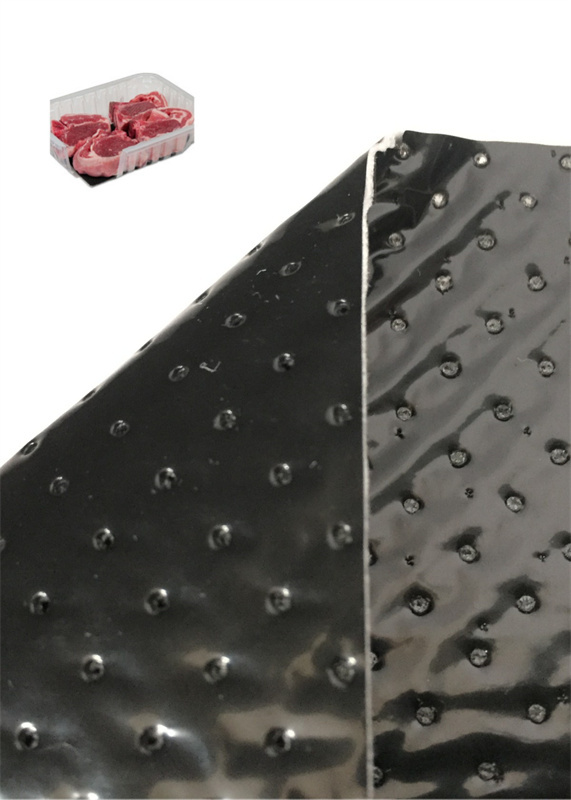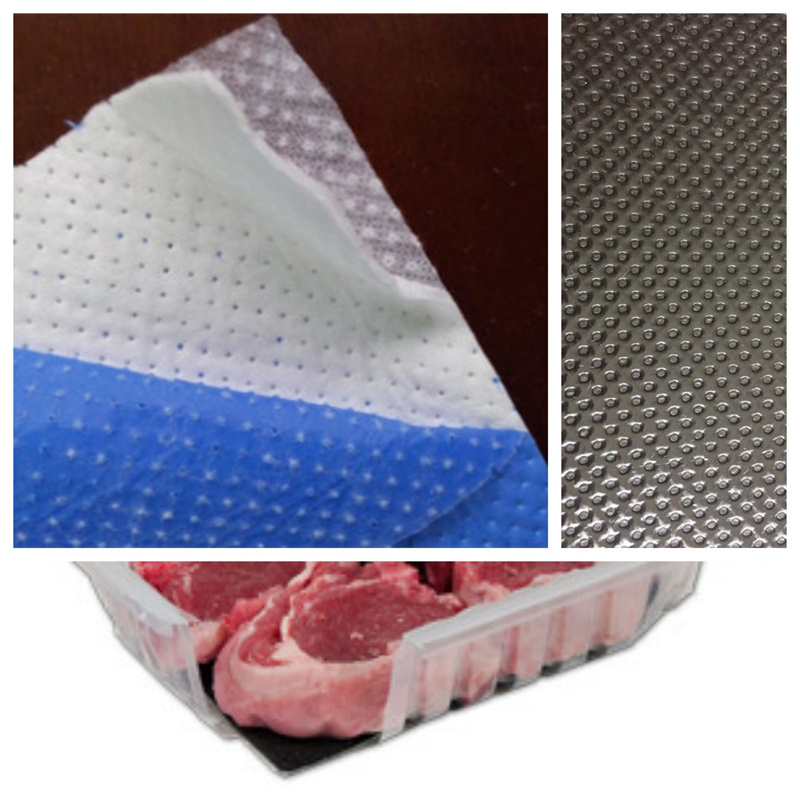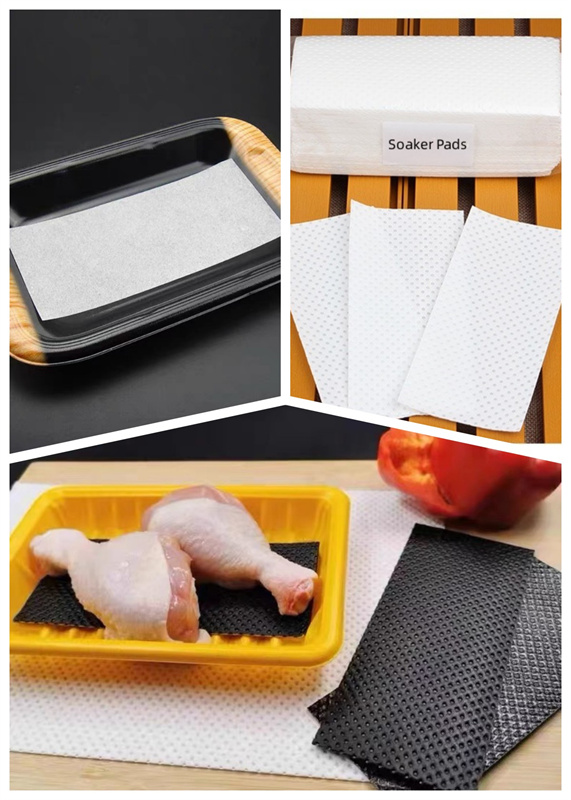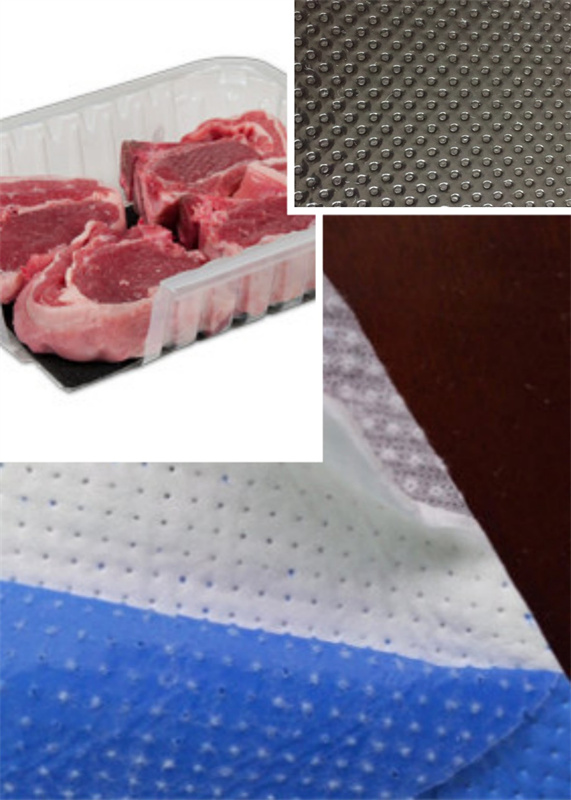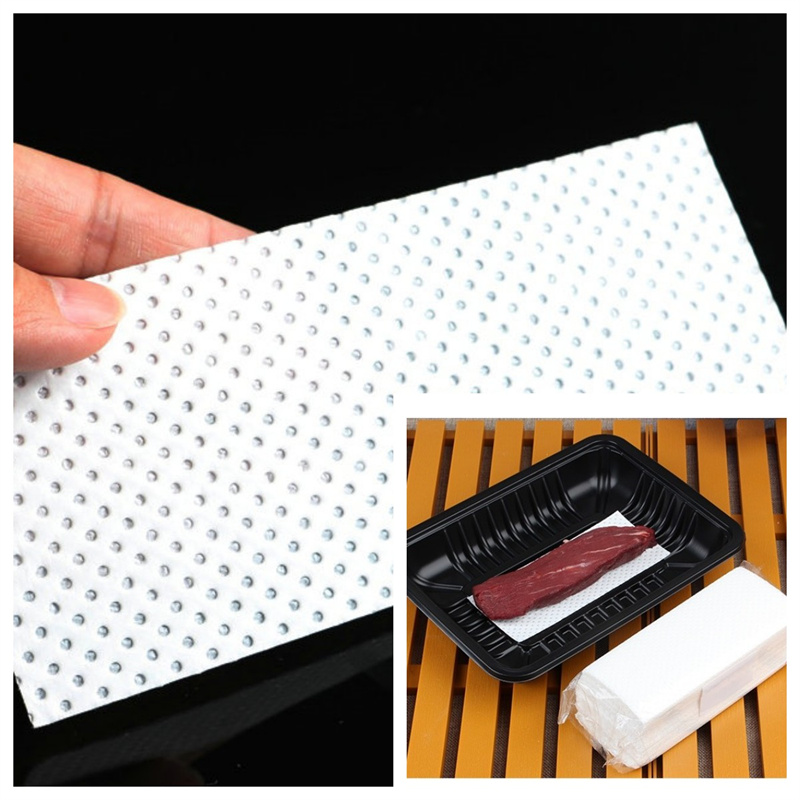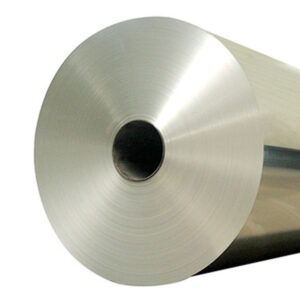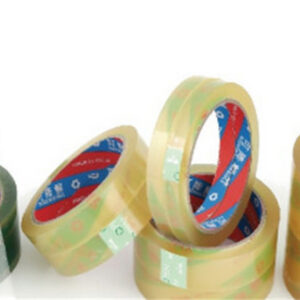About Absorbent mat
Food fresh absorbent mat is a disposable product commonly used in food transportation and preservation. Made of polyethylene (PE), it exhibits good water absorption and fresh-keeping effects. This article will introduce in detail the principle, characteristics, uses and environmental protection considerations of food fresh absorbent mats.
The principle and characteristics
Food absorbent mats use polyethylene (PE), a thermoplastic resin known for its plasticity, toughness, and stability. The water absorption pad undergoes a special process, creating numerous microporous structures on its surface, resulting in high water absorption performance. When the absorbent pad comes into contact with food or liquid, the microporous structure will quickly absorb the liquid, forming a protective layer, which plays the role of freshness, moisture absorption, anti-slip, and so on.
Food fresh absorbent mat has the following characteristics:
- The absorbent pad’s microporous structure enables quick food or liquid absorption, forming a protective layer against moisture, deterioration, and slippage.
- Absorbent pads maintain food freshness by reducing moisture loss and extending shelf life through moisture absorption. Absorbent pads prevent food oxidation, maintain freshness, and preserve taste by blocking outside air contact.
- The absorbent pad’s microporous structure enhances friction, preventing food slippage, collision, and dumping during transportation for improved stability.
- Hygiene and safety: Food fresh absorbent mats are disposable items that individuals can discard directly after use, thereby avoiding the risk of secondary pollution. Moreover, the polyethylene (PE) material itself meets the food hygiene standards and will not produce any harmful substances in the food.
Uses
The food industry widely utilizes food fresh absorbent mats in various aspects, primarily encompassing the following areas:
- Absorbent pads prevent slippage, absorb moisture, and maintain freshness during food transportation, keeping food dry and fresh.
- Absorbent mats protect moisture-sensitive products in cold chain logistics, preventing condensation damage and maintaining food quality.
- Absorbent mats enhance food freshness and display in cabinets, markets, and other settings where food is placed.
- Absorbent mats in vegetable and fruit storage reduce moisture, prevent rot, and extend shelf life.
- Cooking processing: Absorbent mats in food cooking maintain ingredient texture, and taste, and enhance cooking by regulating humidity.
environmental considerations
Although food fresh absorbent mats are disposable, we should still consider environmental factors and take appropriate disposal measures during use.
- After use, individuals should separate the absorbent mat from other garbage and recycle it. According to local waste sorting regulations, they should place it in the appropriate recycling bins or recycling bags.
- Opt for eco-friendly materials to produce absorbent pads, reducing environmental impact through degradation or recyclability.
- Use absorbent pads in appropriate quantities to avoid wastage, based on individual needs and prevent unnecessary usage.
- Promote eco-friendly alternatives for absorbent pads, maintaining functionality while reducing environmental impact through degradable material options.
Food safety and hygiene
The food industry recognizes the importance of food safety and hygiene as crucial concerns. Food fresh absorbent mats are manufactured using safe polyethylene (PE) and dust-free paper, meeting food hygiene standards and excluding harmful substances. This means that when using absorbent pads, there will be no contamination or harmful effects on food, ensuring the quality and safety of food.
Users dispose of pads easily, preventing pollution and eliminating cleaning, offering a convenient and hygienic solution for the food industry.
Product diversity and customization
Manufacturers design and manufacture food fresh absorbent mats with a certain degree of flexibility. Based on different food types, specifications, sizes, water absorption requirements, and color preferences, companies can customize various absorbent pads. For example, for different types of foods such as meat, fruits, and vegetables, you can choose the corresponding absorbent pad to meet the preservation and moisture absorption needs of different foods.
Economic benefits and efficiency gains
The use of food-fresh absorbent mats can bring economic benefits and improve work efficiency. Absorbent pads extend shelf life, minimize deterioration, and lower fresh food costs. Mats prevent sliding, and damage and improve logistics.
Absorbent pads preserve food quality, appearance, and taste, and increase product value, boosting competitiveness and market share.
Precautions and storage methods
When using food fresh absorbent mats, you need to pay attention to the following points:
- Ensure the dryness of the absorbent mat before using it to maintain its optimal water absorption capability.
- Reasonable use of quantity: according to the type, quantity, and demand of food, rationally use absorbent mats to avoid waste.
- Absorbent mats have no storage restrictions; they are chemical-free, glue-free, and don’t release harmful substances or gases. Avoid direct sunlight to prevent discoloration.
- After use, individuals should separate the absorbent mat from other waste and recycle it appropriately to minimize its environmental impact.
Food fresh absorbent mats are essential in the food industry, offering water absorption and freshness benefits as disposable products. Food fresh absorbent mats ensure freshness, efficiency, safety, and quality, benefiting the economy and hygiene. Prioritize environmental protection when using absorbent pads, practicing responsible use and disposal for sustainability.


